The Top Lacrosse Backpacks for Athletes in 2023The Top Lacrosse Backpacks for Athletes in 2023
Choosing the Proper Size Lacrosse Backpack
When selecting a lacrosse backpack, one of the most important factors to consider is getting the right size bag for your gear. You’ll want to make sure to choose a spacious enough backpack that can fit all of your equipment, including your stick, helmet, pads, cleats, and any other accessories you may need to tote around. However, you also don’t want an oversized backpack that is bulky and cumbersome to carry.
Take time to lay out all of the items you’ll need to fit in the bag so you can accurately gauge the amount of storage space required. Be sure to account for multiple sticks if you play different positions, extra jerseys or shorts for practice, and any other equipment like water bottles, towels, tape, or medical kits. It’s better to size up if you’re between two options to have extra room.
The ideal lacrosse backpack has enough specialized pockets, sleeves, and compartments to keep all your gear securely organized and protected. But the main compartment needs to be roomy enough to fit your stick, pads, and a helmet without cramming it all in tightly. Carefully check product dimensions and read user reviews to find real-world feedback on fit and capacity.
It’s also key to get the right bag size relative to your height and torso length so it fits comfortably when carried. Be wary of huge bags that will be bulky to wear and cause neck or shoulder strain. The bottom of the backpack should rest no lower than your lower back. Adjustable padded shoulder straps and sternum straps help get the right customizable fit.
With the right properly fitted lacrosse backpack, you’ll reduce fatigue from carrying all your heavy gear and keep your equipment protected from damage during transport. Take the time to evaluate your needs and find the ideal bag size before purchasing.
Finding a Breathable, Moisture-Wicking Lacrosse Backpack
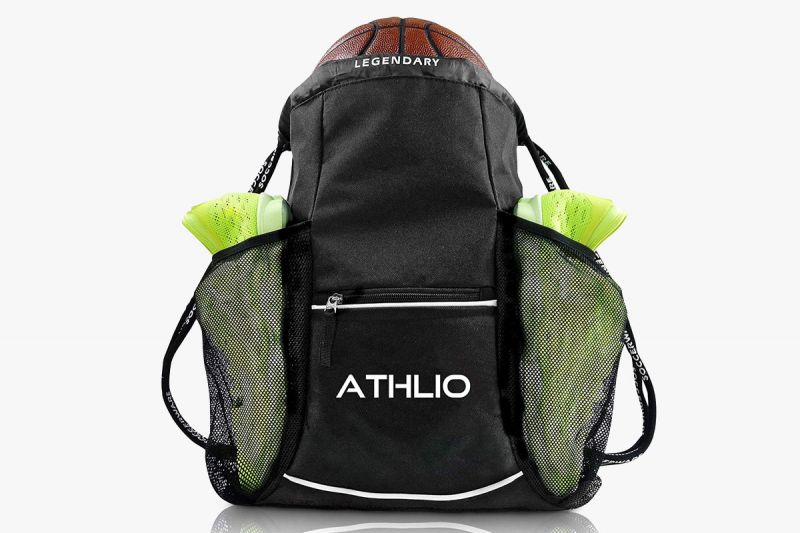
When playing lacrosse, you work up a major sweat during practice and games. Having a backpack made with breathable, moisture-wicking fabric is crucial to avoid a soggy bag and stinky gear after all that intense activity. The ideal lacrosse backpack should be constructed using lightweight, quick-drying synthetic materials on the outside to promote airflow and keep your equipment dry.
Look for backpacks made with polyester or nylon exteriors versus non-breathable vinyl or leather. The fabric weave should not be too tight or dense—this promotes air circulation to cut down on condensation. Mesh panels incorporated into the design also enhance ventilation. Moisture-wicking properties draw sweat away from your back and the surface of the bag.
Inside the bag, moisture-wicking mesh pockets help keep damp gear separated from your dry items. Some backpacks come with an integrated ventilated shoe compartment to stash your rank, muddy cleats without them stenching up the rest of your stuff. Exterior lash points and daisy chains are also useful for attaching bulky pads on the outside of the bag so they can dry out.
In addition to moisture-wicking fabrics, lacrosse backpacks should have water-resistant coatings like a DWR finish to bead up and repel light rain. Just avoid fully waterproof vinyl bags that block all airflow. antimicrobial treatments in the fabric are also a nice bonus for inhibiting odors and bacteria growth.
The padding on the back panel and shoulder straps should likewise be made of breathable mesh instead of solid foam. This improves comfort by cutting down on sweaty back syndrome when wearing the bag. Well-ventilated, moisture-wicking backpacks lead to drier gear and less stench—a win-win for lacrosse players!
Finding a Lacrosse Backpack with Plenty of Pockets
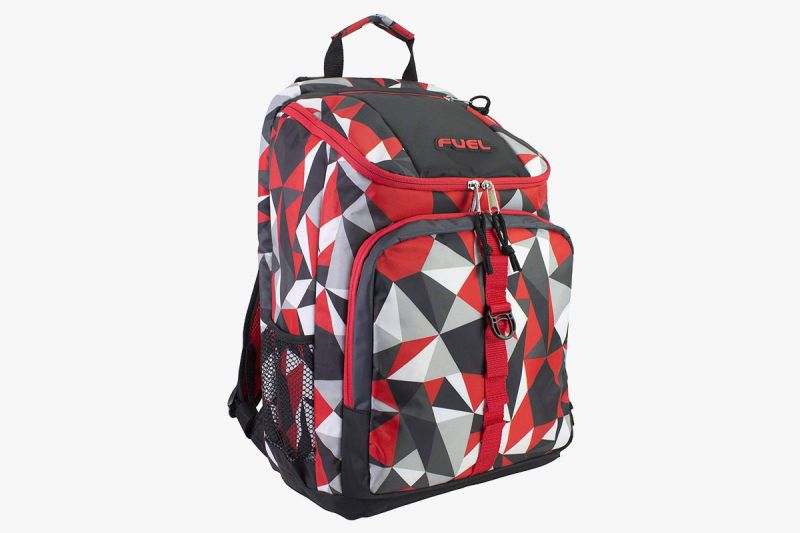
When carrying all your lacrosse gear in a backpack, having sufficient storage through a variety of specialized pockets and compartments is a must. The best lacrosse backpacks have plenty of well-designed pockets to keep you organized.
Look for a bag with a large main compartment for holding your helmet, pads, shoes, and stick, plus several zippered exterior pockets. Smaller mesh pockets are great for storing personal items like your phone, wallet, and keys. Vertical zip pockets on the sides should fit water bottles and snacks. A fleece-lined valuables pocket keeps sunglasses or electronics safe from scratches.
Some lacrosse backpacks incorporate a dedicated padded sleeve for safely carrying your lacrosse stick. This prevents it from poking through and damaging your other gear. For bags without this feature, be sure the main compartment is roomy enough for your stick while still having space for other equipment.
Extra large J-shaped pockets are ideal for stashing bulky pads. A ventilated shoe compartment in the bottom of the bag keeps muddy cleats isolated. Look for a bag with lash points and daisy chains to attach equipment on the exterior.
The more compartmentalized and specialized the storage options, the easier it will be to stay organized and quickly access exactly what you need out of your lacrosse backpack. Well-designed and strategically placed pockets eliminate the need for rummaging around through loose gear.
Prioritize backpacks offering padded, fleece-lined laptop sleeves and pockets for electronics to safely transport schoolwork or devices. Just be sure to get a bag with enough room for both your sports gear and everyday carry items.
Choosing a Lacrosse Backpack with a Stick Holder
For most high school and college players, a backpack with a 30-40 liter capacity provides ample space without being unwieldy. Youth players can often get by with 20-30 liter bags. However, individual needs may vary based on the amount of gear you carry and your physical size.
Matching Backpack Size to Your Frame
How does your body type factor into lacrosse backpack sizing? The bottom of the bag should rest above your lower back, not extending below your waist. For shorter players, this may mean opting for a more compact bag to avoid an awkward fit.
Adjustable straps are essential for customizing the fit to your torso length. Look for bags with padded, contoured shoulder straps and a sternum strap to distribute weight evenly and reduce strain.
The Importance of Breathability in Lacrosse Backpacks
Why is breathability a crucial feature in lacrosse backpacks? Lacrosse is an intense sport that generates a lot of sweat and moisture. Without proper ventilation, your gear can quickly become a breeding ground for odor-causing bacteria and mildew.
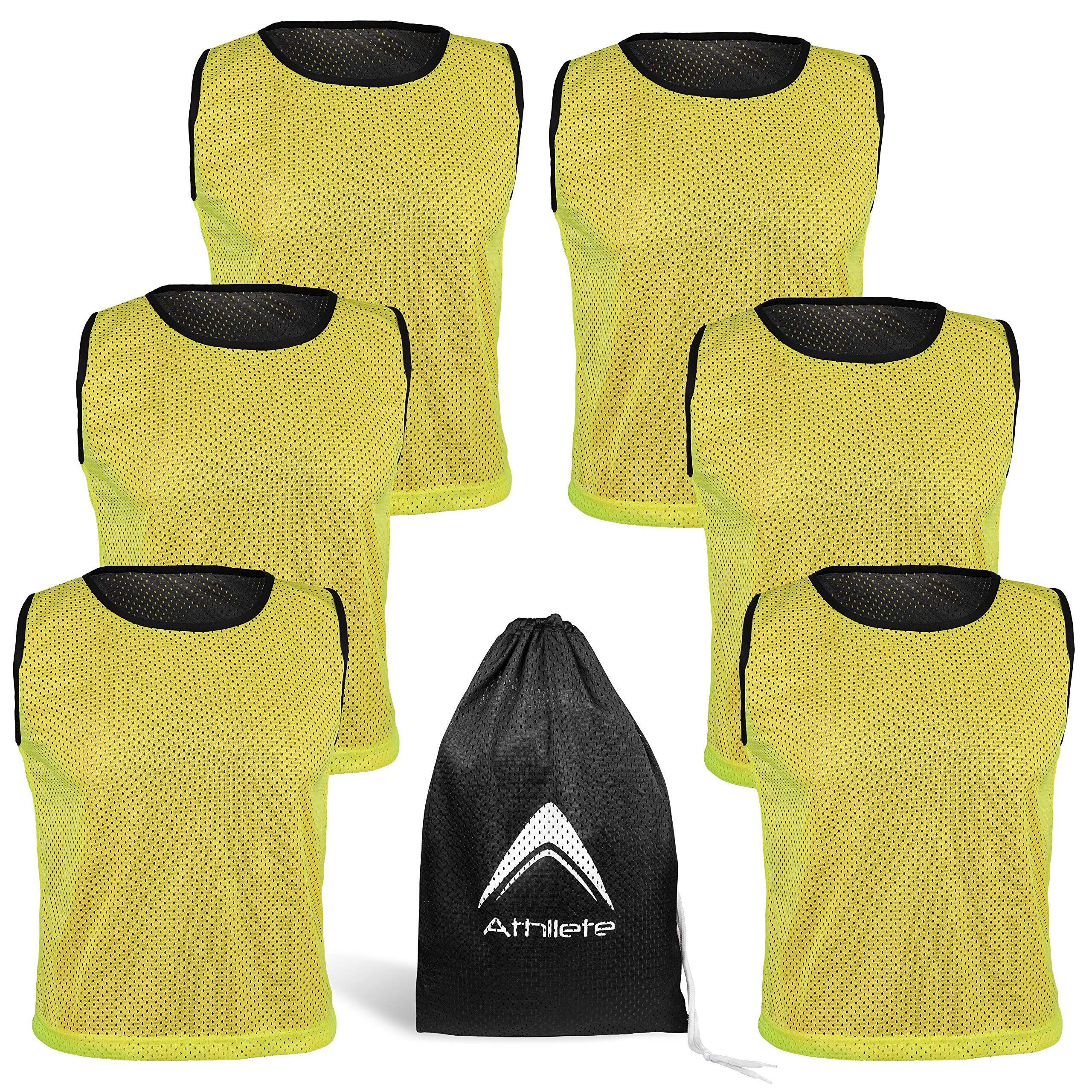
Breathable backpacks offer several advantages:
- Prevent gear from becoming soggy and smelly
- Reduce back sweat when carrying the bag
- Allow equipment to dry faster between uses
- Extend the life of your gear by preventing moisture damage
What materials provide the best breathability for lacrosse backpacks? Look for bags made with lightweight, synthetic fabrics like polyester or nylon. These materials allow air to circulate and wick moisture away from your gear.
Mesh panels are another key feature for enhancing ventilation. Many high-quality lacrosse backpacks incorporate mesh sections on the back panel, sides, and interior pockets to maximize airflow.
Moisture-Wicking Technology in Lacrosse Backpacks
How does moisture-wicking technology work in lacrosse backpacks? These innovative fabrics are designed to pull sweat and moisture away from your gear and body, spreading it over a larger surface area for faster evaporation.
Some backpacks also feature antimicrobial treatments that inhibit the growth of odor-causing bacteria. While not a substitute for regular cleaning, these treatments can help keep your bag fresher between washes.

Essential Pockets and Compartments for Lacrosse Gear Organization
Why are multiple pockets and compartments crucial in a lacrosse backpack? Proper organization keeps your gear easily accessible and protected during transport. A well-designed bag with specialized storage areas streamlines your pre-game and practice routines.
Key compartments to look for in a lacrosse backpack include:
- Large main compartment for helmet and pads
- Separate stick sleeve or holder
- Ventilated shoe compartment
- Fleece-lined pocket for valuables
- Water bottle pockets
- Small accessory pockets for personal items
How can specialized pockets enhance your lacrosse experience? A dedicated stick sleeve protects your most valuable piece of equipment from damage and keeps it easily accessible. Ventilated shoe compartments isolate dirty cleats from the rest of your gear, while fleece-lined pockets safeguard electronics and sunglasses.
Innovative Storage Solutions in Modern Lacrosse Backpacks
What cutting-edge storage features are appearing in the latest lacrosse backpacks? Some bags now include expandable pockets that can accommodate varying amounts of gear. Others feature modular systems allowing you to customize the interior layout to your specific needs.
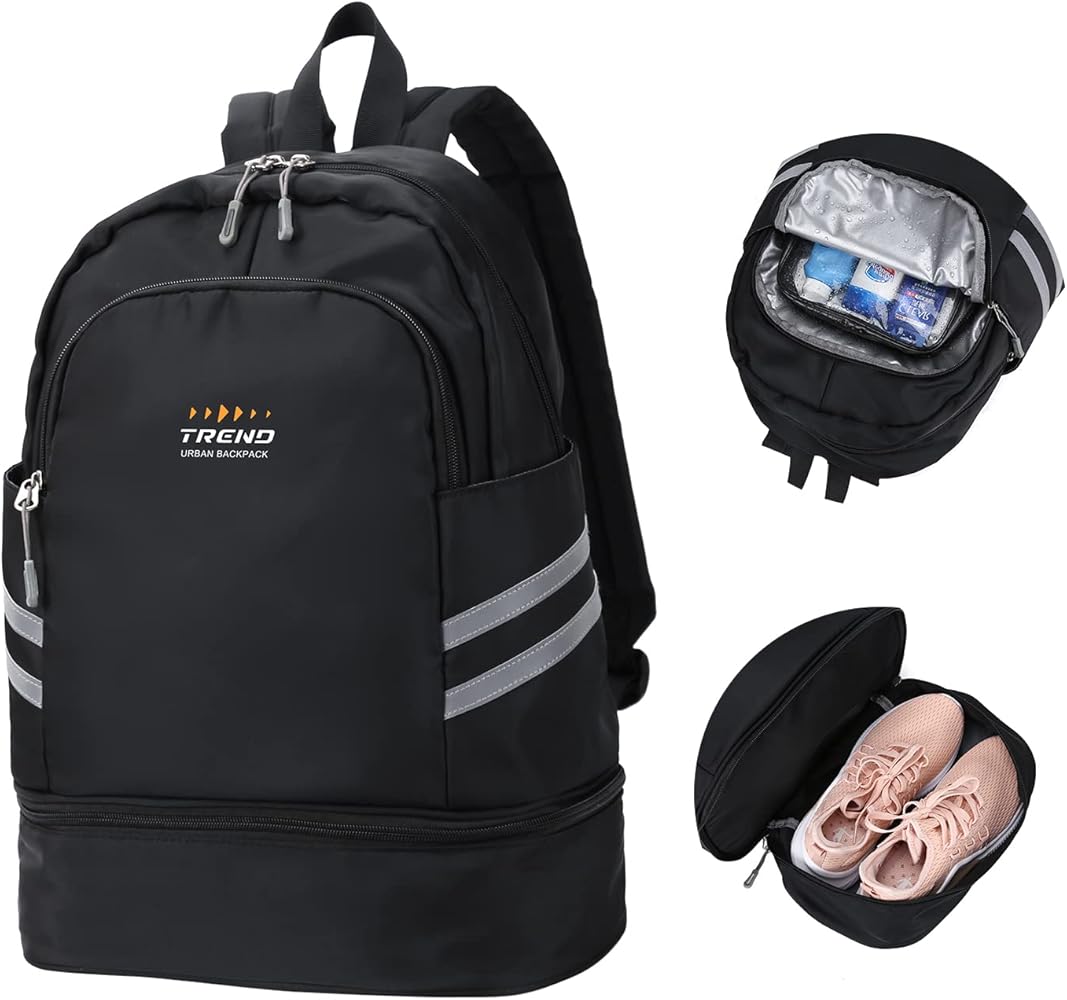
External attachment points, such as daisy chains and MOLLE webbing, provide versatility for carrying additional equipment or attaching carabiners and accessories. These features allow you to adapt your bag to different situations, from practices to tournaments.
Durability Factors in Choosing a Lacrosse Backpack
Why is durability a critical consideration when selecting a lacrosse backpack? The rough-and-tumble nature of the sport, combined with the weight of equipment, puts significant stress on your bag. A durable backpack not only protects your gear but also provides long-term value.
Key durability features to look for include:
- Reinforced stitching at stress points
- Abrasion-resistant fabric in high-wear areas
- Water-resistant or waterproof coatings
- Heavy-duty zippers and hardware
- Padded bottom panel for added protection
How can you assess the durability of a lacrosse backpack before purchasing? Look for bags made by reputable sporting goods manufacturers with a track record of quality. Read user reviews to get real-world feedback on how the backpack holds up over time.
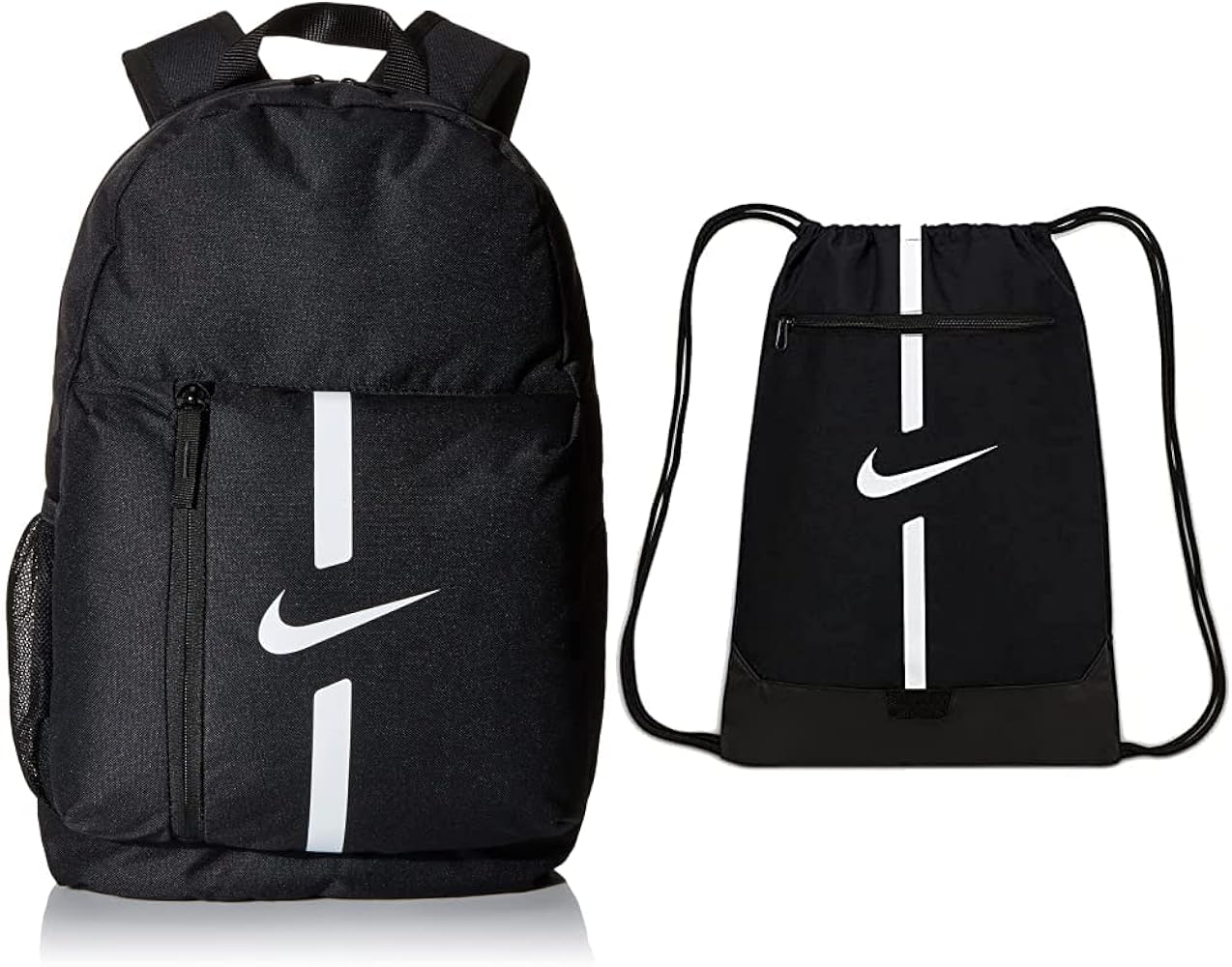
Pay attention to the denier rating of the fabric, which indicates its thickness and strength. Higher numbers (like 600D or 1000D) generally signify more durable materials.
Balancing Weight and Durability in Lacrosse Backpacks
Is it possible to find a lacrosse backpack that’s both durable and lightweight? Many modern bags strike a balance between toughness and portability by using advanced materials. Ripstop nylon, for example, offers excellent strength-to-weight ratio and tear resistance.
Some manufacturers reinforce only the most critical areas with heavier materials, keeping the overall bag weight down while still providing durability where it’s most needed.
Comfort Features for Extended Wear and Travel
Why should comfort be a priority when choosing a lacrosse backpack? Given the weight of lacrosse equipment and the frequency with which players transport their gear, a comfortable bag can significantly reduce fatigue and prevent strain injuries.
Essential comfort features in lacrosse backpacks include:

- Padded, adjustable shoulder straps
- Breathable back panel with airflow channels
- Sternum strap for weight distribution
- Padded hip belt (for larger bags)
- Ergonomic design that contours to your back
How do these features contribute to overall comfort? Padded straps and back panels cushion the weight of your gear, while adjustable components allow you to customize the fit to your body. Airflow channels help reduce back sweat, and sternum straps prevent the bag from shifting during movement.
Ergonomic Advancements in Lacrosse Backpack Design
What innovations are improving the ergonomics of lacrosse backpacks? Some manufacturers are incorporating load-lifter straps, which pull the top of the bag closer to your body, improving balance and reducing strain on your lower back.
Another trend is the use of lightweight, molded back panels that conform to the natural curve of your spine. These panels provide structure and ventilation while maintaining a close, comfortable fit against your back.

Weather Resistance in Lacrosse Backpacks
Why is weather resistance important for lacrosse backpacks? Lacrosse is often played in variable weather conditions, and your gear needs protection from the elements. A water-resistant or waterproof backpack keeps your equipment dry during light rain or when placed on damp ground.
Key weather-resistant features to consider include:
- DWR (Durable Water Repellent) coating
- Sealed or taped seams
- Water-resistant zippers
- Built-in rain cover
- Quick-drying fabric
How effective are these weather-resistant features? While most lacrosse backpacks aren’t fully waterproof, high-quality water-resistant treatments can repel light to moderate rainfall. For heavier downpours, some bags include a stowable rain cover for complete protection.
Balancing Weather Protection and Breathability
Can a lacrosse backpack be both weather-resistant and breathable? Many modern fabrics offer a balance of water resistance and breathability. Look for bags that use materials like Gore-Tex or eVent, which repel water while allowing moisture vapor to escape.
![]()
Some manufacturers also incorporate water-resistant panels in key areas while using more breathable materials elsewhere, providing targeted protection without sacrificing overall ventilation.
Style and Customization Options for Lacrosse Backpacks
Why consider style when choosing a lacrosse backpack? While functionality is paramount, many athletes also want a bag that reflects their personal taste or team colors. A stylish backpack can boost confidence and team spirit.
Popular style options in lacrosse backpacks include:
- Team color schemes
- Bold graphic designs
- Sleek, minimalist aesthetics
- Customizable patches or name tags
- Reflective elements for visibility
How can you personalize your lacrosse backpack? Many manufacturers offer customization options, allowing you to add your name, number, or team logo to the bag. Some even provide online design tools to create a fully unique backpack.
Balancing Style and Functionality in Lacrosse Gear
Is it possible to find a lacrosse backpack that’s both stylish and highly functional? Absolutely. Many top brands recognize the importance of aesthetics and offer bags that combine eye-catching designs with all the necessary features for serious athletes.

Look for backpacks that incorporate stylish elements without compromising on essential features like durability, comfort, and organization. Remember that a well-designed bag can look great while still performing at the highest level on the field.
As the popularity of lacrosse continues to grow, manufacturers are increasingly offering a wide range of styles to cater to diverse tastes. Whether you prefer a classic look or something more contemporary, you’re likely to find a backpack that suits both your style preferences and practical needs.
Choosing the Proper Size Lacrosse Backpack
When selecting a lacrosse backpack, one of the most important factors to consider is getting the right size bag for your gear. You’ll want to make sure to choose a spacious enough backpack that can fit all of your equipment, including your stick, helmet, pads, cleats, and any other accessories you may need to tote around. However, you also don’t want an oversized backpack that is bulky and cumbersome to carry.
Take time to lay out all of the items you’ll need to fit in the bag so you can accurately gauge the amount of storage space required. Be sure to account for multiple sticks if you play different positions, extra jerseys or shorts for practice, and any other equipment like water bottles, towels, tape, or medical kits. It’s better to size up if you’re between two options to have extra room.
The ideal lacrosse backpack has enough specialized pockets, sleeves, and compartments to keep all your gear securely organized and protected. But the main compartment needs to be roomy enough to fit your stick, pads, and a helmet without cramming it all in tightly. Carefully check product dimensions and read user reviews to find real-world feedback on fit and capacity.
It’s also key to get the right bag size relative to your height and torso length so it fits comfortably when carried. Be wary of huge bags that will be bulky to wear and cause neck or shoulder strain. The bottom of the backpack should rest no lower than your lower back. Adjustable padded shoulder straps and sternum straps help get the right customizable fit.
With the right properly fitted lacrosse backpack, you’ll reduce fatigue from carrying all your heavy gear and keep your equipment protected from damage during transport. Take the time to evaluate your needs and find the ideal bag size before purchasing.
Finding a Breathable, Moisture-Wicking Lacrosse Backpack

When playing lacrosse, you work up a major sweat during practice and games. Having a backpack made with breathable, moisture-wicking fabric is crucial to avoid a soggy bag and stinky gear after all that intense activity. The ideal lacrosse backpack should be constructed using lightweight, quick-drying synthetic materials on the outside to promote airflow and keep your equipment dry.
Look for backpacks made with polyester or nylon exteriors versus non-breathable vinyl or leather. The fabric weave should not be too tight or dense—this promotes air circulation to cut down on condensation. Mesh panels incorporated into the design also enhance ventilation. Moisture-wicking properties draw sweat away from your back and the surface of the bag.
Inside the bag, moisture-wicking mesh pockets help keep damp gear separated from your dry items. Some backpacks come with an integrated ventilated shoe compartment to stash your rank, muddy cleats without them stenching up the rest of your stuff. Exterior lash points and daisy chains are also useful for attaching bulky pads on the outside of the bag so they can dry out.
In addition to moisture-wicking fabrics, lacrosse backpacks should have water-resistant coatings like a DWR finish to bead up and repel light rain. Just avoid fully waterproof vinyl bags that block all airflow. antimicrobial treatments in the fabric are also a nice bonus for inhibiting odors and bacteria growth.
The padding on the back panel and shoulder straps should likewise be made of breathable mesh instead of solid foam. This improves comfort by cutting down on sweaty back syndrome when wearing the bag. Well-ventilated, moisture-wicking backpacks lead to drier gear and less stench—a win-win for lacrosse players!
Finding a Lacrosse Backpack with Plenty of Pockets

When carrying all your lacrosse gear in a backpack, having sufficient storage through a variety of specialized pockets and compartments is a must. The best lacrosse backpacks have plenty of well-designed pockets to keep you organized.
Look for a bag with a large main compartment for holding your helmet, pads, shoes, and stick, plus several zippered exterior pockets. Smaller mesh pockets are great for storing personal items like your phone, wallet, and keys. Vertical zip pockets on the sides should fit water bottles and snacks. A fleece-lined valuables pocket keeps sunglasses or electronics safe from scratches.
Some lacrosse backpacks incorporate a dedicated padded sleeve for safely carrying your lacrosse stick. This prevents it from poking through and damaging your other gear. For bags without this feature, be sure the main compartment is roomy enough for your stick while still having space for other equipment.
Extra large J-shaped pockets are ideal for stashing bulky pads. A ventilated shoe compartment in the bottom of the bag keeps muddy cleats isolated. Look for a bag with lash points and daisy chains to attach equipment on the exterior.
The more compartmentalized and specialized the storage options, the easier it will be to stay organized and quickly access exactly what you need out of your lacrosse backpack. Well-designed and strategically placed pockets eliminate the need for rummaging around through loose gear.
Prioritize backpacks offering padded, fleece-lined laptop sleeves and pockets for electronics to safely transport schoolwork or devices. Just be sure to get a bag with enough room for both your sports gear and everyday carry items.
Choosing a Lacrosse Backpack with a Stick Holder
One of the handiest features to look for in a lacrosse backpack is an integrated stick holder. This provides a separate storage sleeve or tube specifically sized to fit your lacrosse stick, protecting it and keeping it securely in place as you move.
Rather than jamming your stick in loose alongside your other gear, a stick holder keeps it protected from getting scratched, warped, or cracked. Individual stick storage also prevents your stick from whacking around and causing damage inside the bag. No more padding and helmets getting poked through!
Models like the Maverik Rome and STX Super Power carry sticks vertically in a protective sleeve so the head and shaft don’t get bent. Other bags feature external horizontal stick holders across the back, allowing quick access without opening the bag. This is convenient, but may catch and snag more when moving through crowded spaces.
The stick holder sleeve or tube needs to be large enough to accommodate the head without cramming it in tightly. Measure your stick’s dimensions including the length and head width. An expandable or adjustable holder offers more flexibility for different stick sizes.
Some backpacks allow you to slide the stick holder sleeve completely out if you don’t need it for a certain trip. This gives you more packing space. Just be sure the compartment is structured properly to keep its shape when empty.
A well-designed lacrosse stick holder takes the headache and hassle out of transporting your stick safely. It keeps the stick protected and out of the way of your other gear for smooth packing and unpacking. Prioritize backpacks that incorporate this handy feature in your search.
Choosing a Durable Lacrosse Backpack
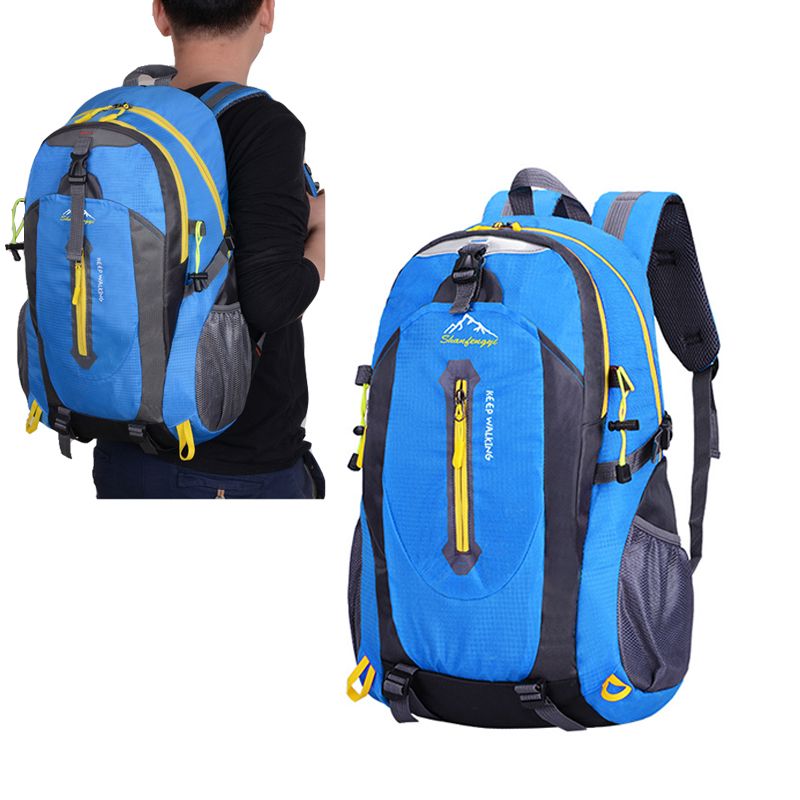
When carrying all your lacrosse gear, it’s important to choose a backpack that’s durable enough to withstand the rigors of the sport. Lacrosse equipment is bulky and heavy, so you need a bag that’s designed to take abuse without failing.
Look for backpacks made with rugged materials like dense nylon or polyester weave with reinforced stitching on high-stress points. Avoid cheaper bags with thinner fabrics prone to ripping. Burly zippers designed for heavy use are also key, like self-healing coil zippers that resist snagging.
The stitching throughout the bag should be tight and reinforced with bartack stitching protecting the seams around pocket openings and contact points. Padding on the shoulder straps, back panel, and other areas help cushion the load.
Abrasion-resistant panels on the bottom and lower sides guard against scuffs, tears, and fraying when you set the bag down on rough surfaces. Some bags have a plastic sheet on the bottom for durability and water resistance.
For maximum protection, look for backpacks made with water-resistant tarpaulin fabric or featuring a TPE coating on the bottom third most prone to damage. This extra reinforcement really helps prolong the life of your bag.
The hardware is often a weak point, so look for reinforced metal buckles, zipper pulls, and clips that won’t easily bend or snap off when loaded up. Durable lacrosse bags stand the test of time despite rough treatment in transit and storage.
Finding a Lacrosse Backpack with Cleat Storage

After a tough lacrosse game or practice, the last thing you want is your muddy, damp cleats banging around freely in your bag, soaking your other gear. The best lacrosse backpacks provide a specialized storage solution for your shoes.
Look for bags with a separate ventilated cleat compartment in the base of the backpack. This area should be lined with moisture-wicking material and feature drainage ports to keep the rest of your bag contents clean and dry.
Some backpacks integrate a removable dirt bag or mesh sack to contain dirty cleats. This handy accessory can be taken out and washed as needed. Models with an external zipper provide access to the shoe compartment without opening the main bag.
If your backpack lacks a dedicated cleat compartment, check that the main storage area has enough room to pack your shoes efficiently. Carry them in a separate drawstring bag or wrap them in a towel to contain mess.
Consider a backpack with external lash points, compression straps or daisy chains to attach your shoes on the outside when wet or dirty. Just make sure to have a rain cover in case of precipitation.
A lacrosse backpack with well-designed cleat storage keeps your gear stench free and ensures you don’t have to dump out your entire bag to access your shoes. Prioritize models with a specialized ventilated compartment or external carry options to save headaches.
Choosing a Lacrosse Backpack with Padded Straps
Lacrosse gear is bulky and heavy, so padded shoulder straps are a must for your backpack. Cushioning on the straps helps prevent digging, chafing and fatigue when carrying all your equipment.
Look for wide, well-padded straps with sufficient thickness to distribute weight comfortably across your shoulders. The padding material should be breathable to avoid a sweaty back. Mesh, perforated foam, and textured EVA foam enhance air circulation.
Extra padding on the section of the strap that sits atop your shoulder helps prevent discomfort from the pressure of narrow straps. Some bags add removable padded inserts or sleeve covers for customizable cushioning.
The straps need adjustable length to get the right customized fit. Sliders allow quick length changes on the go as needed for maneuvering. Well-designed sternum straps take pressure off the neck and shoulders for additional comfort.
For ultimate comfort, some lacrosse backpacks have suspender-style straps or a removable hip belt to transfer weight off the shoulders. Look for wide anchor straps and a padded, ventilated back panel for additional support.
Don’t settle for thin, flimsy straps that will dig painfully into your shoulders under the weight of all your heavy gear. Proper strap padding makes a big difference in carrying comfort and avoiding fatigue.
Finding a Lacrosse Backpack with a Waterproof Interior
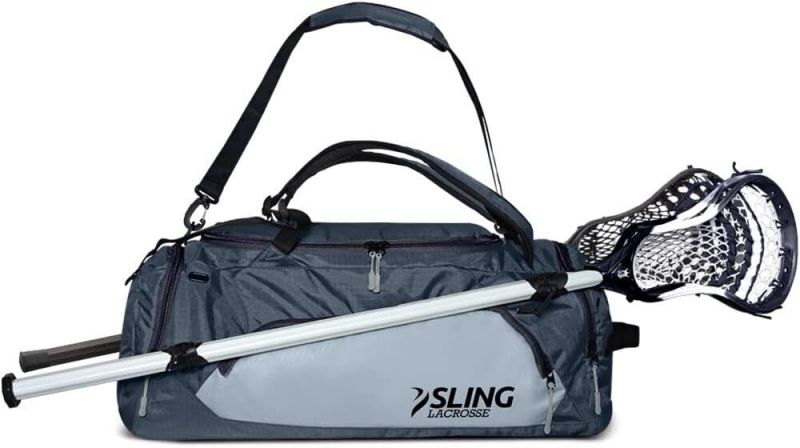
When carrying all your lacrosse gear, having a waterproof lining or water-resistant coating inside your backpack is smart protection. Spills, rain, and sweat can damage your equipment without proper water protection.
Look for backpacks made with water-resistant tarpaulin fabric or coated nylon on the interior. Some feature a PU backing for enhanced water repellency without compromising breathability and airflow. Seam-sealing tape provides extra leak protection.
Bags constructed using densely woven fabric with a durable water repellent (DWR) finish also effectively bead up moisture. Just take care that interior pockets are made of mesh or quick-drying materials so gear doesn’t sit damp.
Fully waterproof vinyl or TPU-lined bags offer the ultimate protection but may trap condensation without ventilation. Consider removable waterproof pack liners or covers to enjoy the best of both worlds.
Moisture-wicking fabric on interior pockets prevents water-logging in key zones. Some bags have waterproof zippers on wet/dry storage areas or electronics pockets. External daisy chains help carry damp gear away from the interior.
While full waterproofing has downsides, some level of water-resistance is crucial for protecting your gear. Prioritize lacrosse backpacks using water-repellent fabrics, coatings and seam sealing to keep contents dry.
Choosing a Lacrosse Backpack with a Helmet Holder
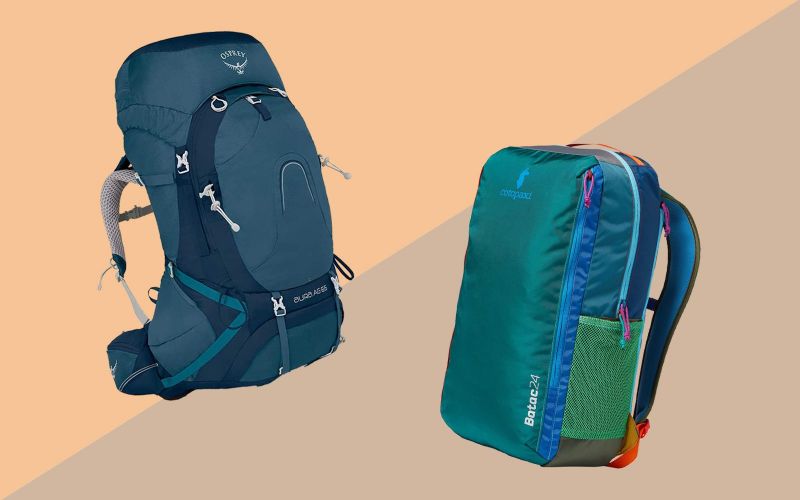
Lacrosse helmets are bulky and awkwardly shaped, making them difficult to pack efficiently. A backpack with an external helmet carry system makes transporting your lid much easier.
Look for lacrosse bags with specialized external attachment points to securely hold your helmet using straps or bungee cords. This keeps it easily accessible without having to unpack the whole bag.
Some backpacks feature integrated helmet carry straps or a compression strap system designed to hold a helmet. Others incorporate daisy chains or gear loops to clip on helmet carry accessories.
External helmet carry options prevent your lid from bouncing around loosely and getting damaged. Storing it on the exterior also maximizes interior space for other gear.
Make sure the carry system is adjustable for different size helmets and allows proper positioning to balance the load. A removable helmet carry system lets you detach it when not needed.
While the main backpack compartment should be roomy enough to fit your helmet, exterior carry options greatly improve organization and access. Seek out bags with secure helmet storage for optimal gear transport.
Prioritizing Lightweight Lacrosse Backpacks
Lugging around heavy gear in a lacrosse backpack can quickly lead to neck, shoulder and back fatigue. Choosing a lightweight yet durable design is key for reducing strain.
Look for bags made using lightweight, high-tenacity fabric like ripstop polyester or nylon. This decreases overall mass without compromising strength and tear-resistance. The fabric weave should be tight enough for durability but remain breathable.
Extra beefy fabric only on high wear zones reduces excess bulk. Compression straps stabilize loads while allowing use of lighter material. Large mesh zones on the back panel and shoulders cut weight.
Hardware and zippers made from lightweight metals instead of plastic reduce heft while maintaining durability. Interior frame sheets add structure without excess weight. Removable components like waist belts and rain covers shed ounces.
Skip superfluous extras that add unnecessary weight like overbuilt padding. Streamlined designs with just the right features and pockets strike the ideal balance of protective capacity and low carrying weight.
The optimal lacrosse backpack feels light on your shoulders even when loaded up with gear. Durability and protection don’t require a heavy pack. Prioritize lightweight yet rugged designs to help avoid fatigue and strain when transporting your equipment.
Choosing a Lacrosse Backpack with Reflectivity
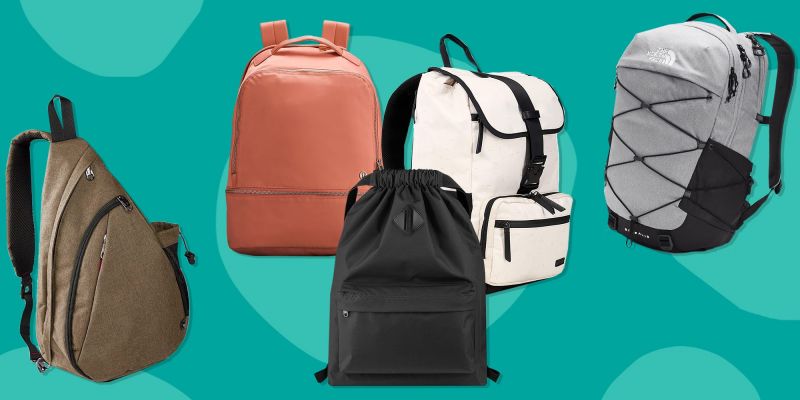
Lacrosse players often head to early morning or late evening practices with their gear. Choosing a backpack with reflective details improves visibility and safety during low-light conditions.
Look for bags with reflective strips, piping, or accents on the exterior. Strategically placed reflective surfaces on the front, sides, shoulder straps, and back panel maximize visibility from all angles.
Reflective components are especially useful when biking or walking along roads in the dark. The shimmering surfaces reflect and amplify light from headlights, street lamps, and bike lights.
Some backpacks incorporate reflective prints and textures into style designs for a lower-profile look. Others feature removable reflector clips or straps to attach when needed and tuck away by day.
Make sure reflective details are large enough to illuminate effectively. Small strips and patches don’t provide ample visibility. Prioritize bags with ample reflective surfaces covering multiple zones.
In addition to general reflectivity, luggage tags and zipper pulls with reflective spots also aid visibility while making contents easier to identify. Illuminate your lacrosse commute with a backpack featuring reflective accents.
Choosing a Ventilated Lacrosse Backpack
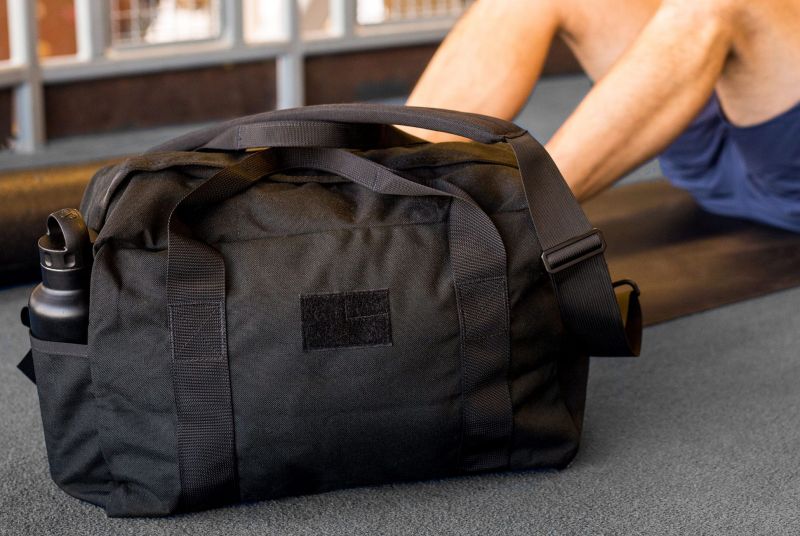
After intense lacrosse practices and games, your gear ends up pungent with sweat. A properly ventilated backpack inhibits odor buildup to keep your bag smelling fresh.
Opt for bags constructed from breathable open-weave fabrics like polyester or nylon rather than non-breathable materials. Mesh components also improve airflow throughout the backpack.
Ventilated shoe storage compartments isolate dirty cleats. Look for exterior lash points to attach pads and helmets so they dry out faster. Daisy chains and bungees provide extra external carry options.
Moisture-wicking, quick-drying liners in gear pockets whisk away sweat. Some bags have ventilating ports or drain holes to circulate air. Antimicrobial coatings prevent bacteria growth.
The shoulder straps, back panel and padding should all use breathable open-cell foam and mesh covers for maximum ventilation. This prevents the dreaded sweaty back syndrome.
While absolute waterproofing has benefits, it can cause interior condensation issues. Maintaining airflow is crucial. Consider removable waterproof pack covers for wet days while maximizing ventilation in dry conditions.
Keep your gear fresher for longer with a properly ventilated lacrosse backpack. Breathable fabrics, vent ports and mesh paneling make all the difference in cutting down on stuck-on stench.
Choosing a Lacrosse Backpack with a Ball Holder
Lacrosse players always need to have balls on hand for practice and warmups. The best lacrosse gear bags have a specialized pocket, pouch or holder to stow extra balls.
Many backpacks feature a mesh storage pocket sized to securely hold 2-3 lacrosse balls. Some incorporate a hard-shell ball holder to prevent damage. External attachment loops allow ball bungees.
Storage should keep balls contained so they don’t bounce around loosely and damage other gear. Easy accessibility allows quick retrieval as needed without unpacking everything.
Side stick or water bottle pockets can sometimes double for ball storage. Just ensure the pocket is large enough to prevent bulging and fitted with a zipper to prevent dropping.
While a standard mesh pocket will work, bags with specialized ball holders make it much more convenient to stash and access balls on the go. Removable ball pouches allow customization when not needed.
A well-designed lacrosse ball carrier pocket eliminates fumbling around for balls in the main compartment. Seek out bags making it easy to transport balls for quick access during training and games.
Finding a Spacious Lacrosse Backpack
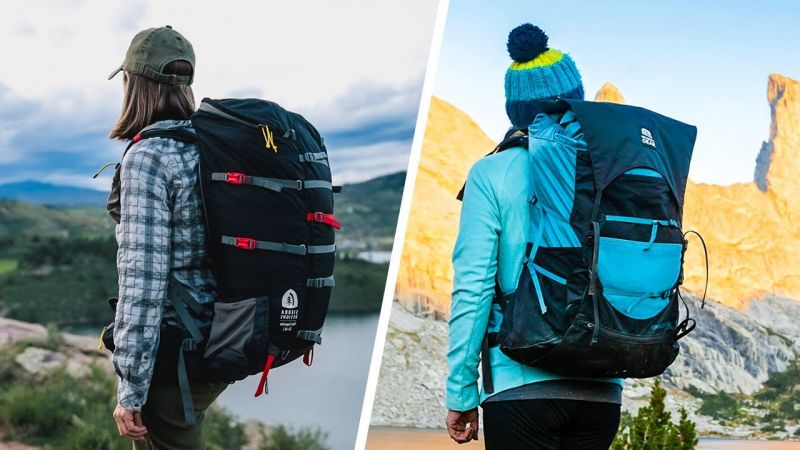
Lacrosse requires a lot of bulky protective gear, so a properly spacious backpack is essential to fit all your equipment comfortably.
Evaluate the storage capacity you need accounting for your helmet, pads, cleats, multiple sticks, clothes, water bottle and other accessories. Leave room to grow if you acquire more gear.
The main compartment needs ample room for your helmet, pads, shoes and a stick without excessive tight packing. Measure gear dimensions to ensure fit, or size up in capacity.
Supplemental space through exterior pockets and compartments optimizes organization without impeding main interior capacity. Daisy chains and lash points provide extra external carry options.
Overstuffing a cramped bag strains seams over time, while an oversized design is unwieldy. Find the ideal size based on what you actually need to carry day-to-day.
While absolute capacity matters, also consider accessibility. Compartments that open fully with U-shaped zippers make packing easier than restricted entry.
Carrying a full lacrosse loadout requires ample, optimized space. Look for roomy yet smartly designed backpacks suited for all your gear without excess bulk.
Choosing a Stylish Lacrosse Backpack

Along with carrying capacity and durability, style is an important factor when picking the right lacrosse backpack. Express your personality through a bag you love.
Look for bags in bold colors and prints that appeal to your tastes. Many offer customizable color schemes to match your gear. Reflective prints and textures add flair.
Balance eye-catching style details with subdued two-tone colorblocking for versatility. Removable style pouches allow accessorizing. External daisy chains support attaching charms.
Consider ergonomic shaping with contours and tapered silhouettes for a modern athletic look. Piping and accents complement the lines rather than compete.
Let your backpack do dual duty for school or everyday use by selecting a bag with a clean, versatile design alongside sport-specific features. Durable fabrics lend a technical vibe.
College players can choose custom bags sporting team colors and logos. Youth athletes may gravitate toward bright, fun styles. Ultimately, pick what speaks to you.
Drab bags feel like a chore, while ones you’re excited to use make heading to practice a joy. Choose a lacrosse backpack that fully expresses your personal style.